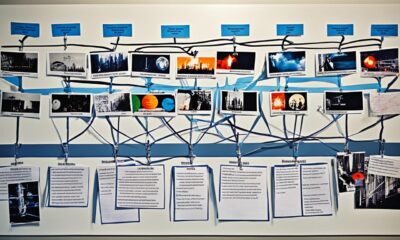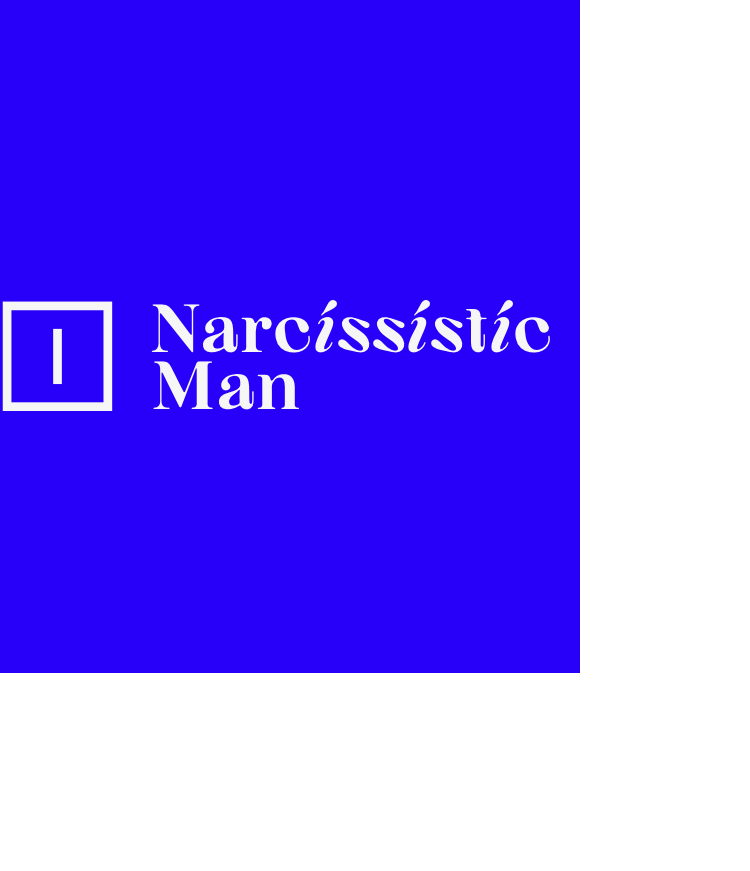Narcissist Relationship
Understanding How Narcissists Jump from Relationship to Relationship
Curious about why narcissists constantly change partners?

In the realm of close relationships, narcissists are akin to vessels navigating through the darkness, creating a trail of broken hearts in their wake. The allure of a narcissist can be captivating, but their ability to seamlessly shift from one romantic entanglement to another often leads to distress and hurt for those entangled with them.
Understanding the underlying reasons behind a narcissist’s perpetual jumping from one relationship to another can shed light on their behavior and its impact on those around them.
Key Takeaways
- Narcissists have an insatiable need for validation and swiftly move from one relationship to another.
- Partners experience emotional harm and instability due to the narcissist’s constant relationship jumping.
- Recognizing manipulation tactics and setting boundaries are crucial for protecting oneself.
- Narcissists struggle with empathy and forming meaningful connections, leading to a cycle of idealization and devaluation.
Psychological Patterns of Narcissists
In examining the psychological patterns of narcissists, we often observe a pervasive sense of grandiosity and a profound lack of empathy towards others. This narcissistic behavior manifests in relationships through manipulation tactics such as love bombing, where the narcissist showers their new partner with affection and attention to quickly establish a deep connection. However, behind this facade lies a selfish desire for control and validation.
Narcissists often jump from one relationship to another in search of admiration and validation, unable to maintain long-lasting and meaningful connections. Their inability to empathize with their partners leads to a cycle of toxic behaviors that ultimately sabotage the relationship. This pattern not only harms the narcissist’s mental health but also inflicts emotional damage on their partners.
Understanding the psychological patterns of narcissists is crucial in recognizing the red flags of a narcissistic relationship. By being aware of the manipulation tactics and lack of empathy displayed by narcissists, individuals can protect themselves from falling into a harmful dynamic. Prioritizing mental health and setting boundaries are essential when dealing with narcissistic relationships.
Idealization and Devaluation Cycle

Examining the psychological patterns of narcissists reveals a troubling cycle known as the Idealization and Devaluation Cycle, where partners are initially put on a pedestal only to be later subjected to criticism, manipulation, and abuse. This cycle is characteristic of narcissistic relationships, where the narcissist goes through phases of idealizing and devaluing their partner, often in a repetitive manner. Below is a table highlighting key aspects of this destructive pattern:
Idealization and Devaluation Cycle Phase Description Outcome Idealization Love bombing, seeking validation Partner on pedestal Devaluation Criticism, manipulation tactics Emotional abuse Discard Moving on to a new relationship Toxic relationship
Understanding this cycle is crucial in recognizing the harmful dynamics of a narcissistic relationship. The constant shift between idealization and devaluation can leave the partner emotionally drained and confused, leading to a cycle of toxic behavior that perpetuates the narcissistic relationship pattern.
Seeking Constant Validation and Admiration
Constantly craving validation and admiration, narcissists exhibit a pattern of swiftly moving from one relationship to another, driven by their insatiable need for praise and attention. This continuous cycle of seeking admiration becomes a central focus in their relationships, often leading to manipulation tactics to ensure a constant flow of attention.
Their ability to charm and attract partners is a tool used to feed their ego, rather than fostering genuine connections. The admiration they seek serves as a mask for their insecurities, masking their fear of being unworthy or unimportant. Despite appearing confident, narcissists rely heavily on external validation to maintain their self-image, leaving a trail of emotional abuse and manipulation in their wake.
Partners are often left feeling guilty for not meeting the narcissist’s insatiable need for admiration, even though the fault lies not with them but with the narcissist’s unquenchable thirst for attention. Understanding this aspect of a narcissist’s behavior can help individuals break free from the cycle of seeking validation from those who are incapable of providing it genuinely.
Impact on Partners and Relationships

Moving from one relationship to another, narcissists leave a trail of emotional turmoil and instability for their partners, impacting both current and new supplies in profound ways. The narcissist’s manipulation tactics and abusive behavior can have devastating effects on those involved, creating a cycle of toxicity and harm.
Here are five emotional responses that partners may experience:
- Feeling discarded, devalued, and emotionally destroyed by the narcissist.
- Being manipulated, controlled, and used for the narcissist’s needs in the new relationship.
- Experiencing cognitive dissonance and justifying the narcissist’s abusive actions.
- Struggling with the lack of empathy and inability to form meaningful connections.
- Enduring a pattern of emotional harm and instability due to the constant cycle of jumping from one relationship to another.
Partners caught in the web of a narcissist’s relationships often grapple with guilt, confusion, and a sense of worthlessness. It’s crucial to recognize these impacts and seek support to break free from the cycle of abuse and manipulation.
Recognizing and Protecting Yourself
Recognize the signs of manipulation and prioritize your emotional well-being when dealing with a narcissist in relationships. Understanding the tactics that a narcissist might use is crucial in protecting yourself from emotional abuse. Here are some common manipulation tactics employed by narcissists in relationships:
| Manipulation Tactics | Description | Example |
|---|---|---|
| Gaslighting | Manipulating reality | Denying something they said |
| Love Bombing | Excessive flattery | Overwhelming you with affection |
| Silent Treatment | Ignoring to manipulate | Ignoring calls/messages |
| Guilt Tripping | Using guilt to control | Blaming you for their actions |
Recognizing these behaviors is the first step towards protecting yourself from a narcissistic relationship. Setting boundaries, seeking support, and prioritizing your emotional and mental well-being are essential in maintaining a healthy relationship with yourself. Remember, it is not selfish to prioritize your own well-being over a toxic relationship.
Frequently Asked Questions
Do Narcissists Jump From Partner to Partner?
Yes, narcissists often exhibit a pattern of jumping from partner to partner. Their relentless search for validation and attention can lead them to quickly lose interest once their needs are met.
Relationships serve as a means for them to seek praise, power, and control. The lack of concern for their partner’s well-being is a hallmark of narcissistic behavior.
Understanding these traits can help navigate relationships with individuals who display narcissistic tendencies.
How Long Will a Narcissist Rebound Relationship Last?
In our analysis, a rebound relationship with a narcissist typically lasts a short time, often just a few months. Such relationships are driven by the narcissist’s need for attention and admiration, rather than genuine love or commitment.
Factors influencing the duration include the individual’s healing process and focus on personal needs over building a stable partnership.
Understanding these dynamics can provide insight into the transient nature of narcissistic rebound relationships.
Do Narcissists Get Into Relationships Quickly?
Oh, do narcissists ever dive headfirst into relationships! Their rush for validation and attention leads them to quickly latch onto new partners. It’s like a whirlwind romance on steroids.
But remember, their fast pace doesn’t mean they’re into genuine connections. It’s all about feeding their ego. So, don’t confuse speed with sincerity when dealing with these relationship speed demons.
Just keep your focus on your own well-being and healing.
Do Narcissists Know They Are Hurting You?
We believe that narcissists often know they’re hurting others, but their need for validation and control typically outweighs their concern for the well-being of their partners.
Their manipulative behavior is often driven by a lack of empathy and a desire to maintain power in relationships.
This can lead to a cycle of emotional abuse, leaving their partners feeling confused, hurt, and questioning their own self-worth.
Conclusion
As we navigate the tumultuous waters of relationships with narcissists, let’s remember that we aren’t mere stepping stones on their path to self-gratification.
Like leaves blowing in the wind, we must stand firm in our worth and protect ourselves from their destructive tendencies.
Just as a lighthouse guides ships safely to shore, let our inner strength and self-respect be our guiding light in the stormy seas of narcissistic relationships.
Our Content Strategist, Jordan, has a knack for deciphering the digital landscape to determine what our audience seeks. With a foundation in behavioral science and digital marketing, Jordan crafts our content strategy, ensuring that our topics are relevant, research-based, and resonant. Their strategic approach helps Narcissistic Man reach hearts and minds across the globe.
Narcissist Relationship
How to Have a Healthy Relationship with a Narcissist
Yearning for insights on navigating a relationship with a narcissist? Discover empowering strategies to navigate this complex dynamic with resilience.

Managing a relationship with someone who is narcissistic can be a complex and difficult task. Recognizing the inherent characteristics and patterns of someone with narcissism is vital for preserving your own identity while dealing with the turbulence of their actions.
However, it is not all gloom and doom; there are strategies that can help navigate this complex dynamic with a sense of empowerment and resilience.
Key Takeaways
- Recognize narcissistic behavior patterns and their impact on relationships.
- Establish and uphold healthy boundaries to protect your well-being.
- Manage your emotional responses by practicing self-awareness and healthy coping mechanisms.
- Seek support and guidance from trusted individuals and consider professional help if needed.
Understanding Narcissistic Behavior
Understanding Narcissistic Behavior involves recognizing the patterns of self-centeredness and lack of empathy that characterize individuals with narcissistic traits. Individuals with Narcissistic Personality Disorder (NPD) often exhibit an inflated sense of self-importance, seeking constant admiration while disregarding the feelings and needs of others. This behavior can significantly impact relationships, making it challenging to establish healthy connections built on mutual respect and empathy.
When in a relationship with a narcissist, it’s crucial to understand that their personality traits stem from deep-rooted issues, such as childhood trauma or neglect. While narcissism isn’t curable, therapy and self-reflection can help narcissists develop healthier coping mechanisms. As partners of narcissists, setting strong boundaries is essential to protect one’s emotional well-being and maintain a sense of self.
Educating oneself about NPD and effective communication strategies can aid in navigating discussions with a narcissistic partner. Seeking support from trusted individuals and prioritizing self-care activities are vital aspects of sustaining a relationship with a narcissist while safeguarding one’s mental and emotional health.
Establishing Healthy Boundaries

Establishing healthy boundaries with a narcissist requires clear communication and unwavering assertiveness in upholding personal limits and expectations within the relationship. It is crucial to clearly define and communicate your boundaries to your partner, even if they exhibit traits of narcissistic personality disorder (NPD). Being assertive and standing firm in enforcing these boundaries is essential, especially when faced with manipulation or guilt-tripping tactics. To help visualize the importance of establishing healthy boundaries, consider the following table:
Steps to Establish Healthy Boundaries Importance Clearly define and communicate boundaries Ensures mutual understanding Be assertive in upholding boundaries Prevents manipulation Practice self-care and prioritize well-being Maintains mental health Seek emotional support from trusted individuals Provides guidance and reassurance Consider professional help if needed Offers specialized assistance
Managing Emotional Responses
After setting clear boundaries to maintain a healthy dynamic with a narcissistic partner, the focus shifts to effectively managing emotional responses in interactions with them.
People with Narcissistic Personality Disorder (NPD) often have fragile self-esteem, leading to behavior that can trigger emotional responses in others.
To navigate this delicate dynamic, it’s crucial to employ strategies that promote emotional regulation and self-care:
- Practice self-awareness: Recognize your emotional triggers when engaging with a narcissistic partner.
- Develop healthy coping mechanisms: Utilize techniques like deep breathing to manage intense emotions.
- Lean on your support: Seek guidance and validation from trusted friends, family, or a therapist.
- Stay calm: Practice emotional regulation to maintain composure during interactions.
- Shift the blame: Avoid internalizing the narcissist’s behavior and focus on setting realistic expectations for emotional reciprocity in the relationship.
Seeking Support and Guidance

When navigating a relationship with a narcissist, seeking support and guidance from trusted individuals or professionals is essential for maintaining emotional well-being and gaining valuable insights.
It’s crucial to reach out to friends, family, or a support network to receive emotional support and guidance.
Additionally, considering joining support groups or seeking therapy from professionals who specialize in narcissistic personality disorder can provide you with the necessary tools to navigate the challenges of such relationships.
Educating yourself about NPD will help you better understand the dynamics at play and empower you to set boundaries and prioritize self-care.
Remember that your well-being is paramount, and seeking support isn’t a sign of weakness but a proactive step towards maintaining your health and wellness.
If you feel overwhelmed or unsafe in the relationship, don’t hesitate to consult with a therapist in private practice who can assist you in navigating the complexities of loving a partner with NPD and help you work towards a happier relationship.
Self-Care Practices
Prioritizing your own well-being and setting boundaries is crucial when dealing with a narcissistic partner to protect yourself emotionally and mentally. It’s important to keep in mind that individuals with narcissistic personality disorder (NPD) may not respond well to traditional relationship dynamics, so implementing self-care practices is essential for maintaining your own mental and emotional health.
Here are some key self-care practices to consider:
- Engage in regular self-care activities: Activities like exercise, meditation, or hobbies can help alleviate stress and promote a sense of well-being.
- Prioritize therapy or counseling: Seeking professional help can provide you with the necessary tools to navigate the challenges of being in a relationship with someone who’s NPD.
- Set and pursue personal goals: Focusing on your own aspirations can help you maintain a sense of fulfillment and purpose outside of the relationship.
- Establish healthy boundaries: Clearly defining boundaries can protect you from emotional manipulation and maintain your self-respect.
- Remember your worth: Remind yourself that you deserve happiness and a healthy relationship, even when dealing with difficult situations like those that may have occurred last night.
Frequently Asked Questions
Can You Have a Healthy Relationship With a Narcissist?
Having a healthy relationship with a narcissist is incredibly challenging. Their self-centered behavior and lack of empathy can make it difficult to maintain a positive dynamic.
Establishing clear boundaries and assertively communicating our needs is crucial to protect our emotional well-being.
Seeking support from friends, family, or a therapist can help navigate the complexities of being in a relationship with a narcissist.
Recognizing when it’s necessary to prioritize our own well-being is essential.
What Is the Best Way to Deal With Narcissist?
Dealing with a narcissist requires setting firm boundaries, practicing assertive communication, and prioritizing self-care.
It’s crucial to educate ourselves on narcissism and seek support from friends, family, or therapists.
Encouraging the narcissist to attend therapy can also be beneficial.
Effective communication strategies like active listening and problem-solving can help navigate challenges.
How Do You Disarm a Narcissist?
When disarming a narcissist, it’s crucial to set firm boundaries and communicate assertively. Prioritizing self-care and seeking support from loved ones or a therapist can also help navigate challenges. Remember to practice empathy while safeguarding your well-being.
Couples or individual therapy can improve relationship dynamics. Educating ourselves about narcissistic personality disorder and encouraging our partner to seek therapy are vital steps. Active listening and healthy boundaries protect us from emotional manipulation.
How Do You Outsmart a Narcissist?
We can outsmart a narcissist by:
- Educating ourselves on narcissism
- Setting clear boundaries
- Prioritizing our well-being
It’s essential to:
- Practice self-care
- Focus on personal growth
- Seek support from friends, family, or a therapist
By understanding narcissistic traits and behaviors, we can:
- Navigate the challenges
- Maintain our own worth
It’s crucial to remember:
- A narcissist’s negative behavior doesn’t define us
- Seeking help is a sign of strength.
Conclusion
In conclusion, navigating a relationship with a narcissist can be challenging. However, understanding their behavior, setting boundaries, managing emotions, seeking support, and practicing self-care can help in the healing process.
Remember, we all deserve to be in healthy and loving relationships. Taking steps to prioritize our well-being is essential.
Stay strong and know that you aren’t alone in this journey towards healing and recovery.
Our Content Strategist, Jordan, has a knack for deciphering the digital landscape to determine what our audience seeks. With a foundation in behavioral science and digital marketing, Jordan crafts our content strategy, ensuring that our topics are relevant, research-based, and resonant. Their strategic approach helps Narcissistic Man reach hearts and minds across the globe.
Narcissist Relationship
10 Signs of a Narcissist Father-Daughter Relationship
Navigate the twisted web of a narcissist father-daughter relationship with a glimpse into the emotional turmoil and intricate dynamics – unravel the complexities that lie ahead.

Navigating the challenges of a father-daughter relationship with a narcissistic parent can feel like balancing on a tightrope, striving for love and affirmation on one side, while facing manipulation and emotional distress on the other.
The dynamics at play in such relationships can have far-reaching implications on one’s emotional and psychological well-being, shaping not only the present but also the future.
As we explore the intricacies of these relationships, we uncover layers of complexity that shed light on the unique challenges faced by daughters of narcissistic fathers.
Key Takeaways
- Narcissistic fathers have a profound impact on the emotional well-being of their daughters.
- Daughters struggle with mental health and toxic dynamics in the relationship.
- Setting healthy boundaries is crucial for daughters’ healing and well-being.
- Seeking support from mental health professionals is essential for daughters’ recovery.
Impact of Narcissistic Fathers on Daughters
The impact of narcissistic fathers on daughters can be profound, shaping their emotional well-being and relationships in significant ways. Daughters raised by narcissistic fathers often struggle with their mental health due to the toxic dynamics of the relationship. These daughters may find it challenging to form healthy attachments and may carry feelings of inadequacy and unworthiness into adulthood.
Establishing boundaries becomes crucial for daughters to protect themselves from further emotional harm and to cultivate a sense of self-worth and autonomy.
Learning to navigate the complex web of emotions stemming from their upbringing is a journey that requires self-reflection and a commitment to healing. Seeking support from trusted individuals, engaging in self-care practices, and setting boundaries are essential steps for daughters to reclaim their emotional well-being.
Symptoms of Daughters of Narcissistic Fathers

Experiencing a constant need for validation and approval from others is a common symptom among daughters of narcissistic fathers. Growing up under the influence of a narcissistic father, daughters often internalize a sense of inadequacy and seek external validation to fill the void left by their fathers’ lack of empathy. This can lead to difficulties in establishing healthy boundaries in relationships, as the daughters may prioritize others’ needs over their own, resulting in a negative impact on their mental and emotional health.
Constant fear of abandonment and rejection can further exacerbate these challenges, contributing to low self-esteem and self-worth. To address these symptoms, daughters of narcissistic fathers often develop coping mechanisms such as prioritizing self-care, setting boundaries, and seeking support from therapists or support groups.
Healing for daughters of narcissistic fathers involves engaging in activities that promote self-love and self-compassion, reclaiming personal power, and actively working towards establishing healthy boundaries to protect their emotional well-being and prevent further harm.
Healing Strategies for Daughters
Navigating the aftermath of a narcissistic father-daughter relationship entails embracing healing strategies that prioritize self-care and empower emotional well-being. Daughters of narcissistic fathers often face deep emotional wounds that require intentional care and attention.
One crucial aspect of healing is seeking support from a mental health professional who can provide guidance and tools to navigate the complexities of emotional abuse. Setting healthy boundaries is essential to protect yourself from toxic interactions and foster personal growth.
It’s vital to surround yourself with a supportive community, whether it be understanding friends or a therapist, who can offer validation and encouragement. Engaging in activities that promote self-expression and self-discovery can aid in the healing process.
Celebrating small victories and practicing self-compassion are key components of forming healthy coping mechanisms. Remember, healing from a narcissistic father-daughter relationship is a journey towards self-acceptance and inner peace.
Strategies for Setting Boundaries

Recognize your boundaries as essential tools for safeguarding your emotional well-being and asserting your right to respect and dignity. When dealing with a narcissistic father-daughter relationship, setting boundaries becomes crucial for maintaining your sense of self and protecting your mental health.
Here are some strategies for setting boundaries effectively:
- Recognize your needs and limits: Understand what you’re comfortable with and what crosses the line for you.
- Communicate your boundaries to others: Clearly express your limits and expectations to your father and anyone else involved.
- Define what behavior is unacceptable to you: Establish clear guidelines on what behaviors you won’t tolerate.
- Assert your right to be treated with respect and dignity: Stand firm in demanding the treatment you deserve.
Coping With Emotional Manipulation
Being aware of the detrimental effects of emotional manipulation is crucial for safeguarding our well-being and fostering healthy relationships. Coping with emotional manipulation in a narcissistic father-daughter relationship can be challenging, leading to fear of failure, relationship issues, and a constant need for validation. This manipulation can cause emotional turmoil and negatively impact one’s sense of self. To combat these effects, it’s essential to engage in activities that bring joy and relaxation, set boundaries to protect emotional health, and seek therapy for support.
Strategies for Coping With Emotional Manipulation Recognize the Impact Engage in Nourishing Activities Break the Cycle of Toxic Relationships Understand how manipulation affects your well-being Find activities that bring you joy and relaxation Recognize healthy relationship dynamics and set boundaries Establish Boundaries Learn to Assert Your Needs Set boundaries to protect your emotional health Say no to assert your needs and build self-respect
Frequently Asked Questions
How Do I Protect My Daughter From a Narcissistic Father?
We can protect our daughter from a narcissistic father by prioritizing her emotional well-being, fostering healthy boundaries, and promoting assertiveness.
Open communication and validation of her experiences are crucial. Providing a safe space for her to express herself is essential.
Seeking professional help for both her and us can help navigate challenges. By recognizing signs of narcissistic behavior and educating ourselves, we can create a supportive environment and enforce boundaries to safeguard her well-being.
How Does a Narcissistic Father Behave?
We observe that a narcissistic father typically displays grandiose behavior, seeking constant admiration and attention while lacking empathy. He may manipulate and exploit others for personal gain, engaging in gaslighting and emotional abuse.
This behavior can make those around him question their reality and worth. Understanding these traits is crucial in identifying and protecting oneself from the toxic effects of a narcissistic individual.
How Does a Narcissist Treat Their Daughter?
When navigating relationships with narcissists, setting boundaries is crucial. We must prioritize self-care, engage in activities that bring joy, and seek therapy when needed.
By understanding narcissistic behavior and its impact, we can protect our emotional well-being. It’s essential to recognize manipulation tactics and cultivate self-compassion.
Building resilience against emotional blackmail and gaslighting empowers us to maintain our sense of self-worth.
How Do You Tell if My Dad Is a Narcissistic?
When trying to determine if a parent is a narcissist, observe their behavior closely. Look for signs such as a lack of empathy, constant need for admiration, and manipulative tendencies. Pay attention to how they interact with others and handle situations.
Seeking advice from a mental health professional can provide valuable insights. Remember, validating your feelings and setting boundaries are essential steps in protecting your emotional well-being in such relationships.
– Can a Father-Daughter Relationship with a Narcissist Ever Improve?
Establishing a good relationship with a narcissist, especially a father-daughter dynamic, can be extremely challenging. Improvement can happen if both parties are willing to communicate and seek professional guidance. However, it’s essential for the daughter to set healthy boundaries and prioritize her own well-being in the process.
Conclusion
In conclusion, daughters of narcissistic fathers often face a plethora of challenges that can impact their emotional well-being and relationships.
It’s crucial for these individuals to recognize the symptoms, seek healing strategies, set boundaries, and cope with emotional manipulation.
By taking these steps, they can break free from the chains of their past and strive towards a brighter, healthier future.
Remember, Rome wasn’t built in a day, but with perseverance and self-care, healing is possible.
Our Content Strategist, Jordan, has a knack for deciphering the digital landscape to determine what our audience seeks. With a foundation in behavioral science and digital marketing, Jordan crafts our content strategy, ensuring that our topics are relevant, research-based, and resonant. Their strategic approach helps Narcissistic Man reach hearts and minds across the globe.
Narcissist Relationship
Understanding the Narcissist-Codependent Relationship Dynamics
Dive into the tangled web of a Narcissist Codependent Relationship where unraveling the complexities reveals hidden truths.

In the sphere of romance, it’s often believed that opposites draw each other in, but what occurs when such attraction results in a harmful relationship?
A Narcissist Codependent Relationship delves into the intricate dance between a narcissist and a codependent individual, shedding light on the complexities that unfold behind closed doors.
As we explore this intricate web of behaviors and emotions, it becomes evident that unraveling the threads of this intricate connection is no easy feat.
Key Takeaways
- Inflated self-importance and relentless pursuit of admiration in narcissists
- Difficulty setting boundaries and prioritizing others’ needs in codependents
- Complementary needs and mutual validation in narcissist-codependent relationships
- Recognize signs of abuse, seek therapy, establish boundaries, and prioritize self-care in recovery.
Understanding Narcissistic Traits
When considering the traits of narcissism, it becomes evident that individuals with this personality disorder exhibit an inflated sense of self-importance and a relentless pursuit of admiration from others. A narcissist’s constant need for validation and admiration often drives them to manipulate and exploit those around them, including their codependent partners.
In a narcissistic-codependent relationship, the narcissistic partner’s traits of entitlement and lack of empathy can be particularly damaging to the codependent person. The codependent individual, often with low self-esteem and a history of being in relationships with narcissists, may find themselves catering to the narcissist’s needs at the expense of their own well-being.
Understanding the symptoms of narcissism is crucial in navigating a codependent relationship. Recognizing the narcissistic behaviors of a partner can empower the codependent person to set boundaries and prioritize their own emotional health.
Recognizing Codependent Behaviors

Recognizing codependent behaviors involves acknowledging the tendency to prioritize the needs and desires of others over one’s own, often leading to a detrimental impact on one’s emotional well-being. In a narcissist-codependent relationship, being able to identify these traits and behaviors is crucial for understanding the dynamics at play.
Here are some signs to help recognize codependent behaviors:
- Constantly seeking approval and validation from others.
- Prioritizing others’ needs and desires over one’s own.
- Difficulty setting and maintaining boundaries.
- Feeling responsible for others’ emotions and actions.
- Fear of abandonment and being alone.
Intersecting Dynamics in Relationships
In understanding the dynamics of intersecting relationships between codependents and narcissists, it becomes evident that the mutual attraction stems from complementary needs and behaviors.
Codependents, often characterized by their people-pleasing tendencies, are drawn to narcissists who exhibit self-centered and demanding behaviors. Conversely, narcissists are attracted to codependents because they provide the admiration and validation they crave.
This mutual need for validation and feeling needed forms the basis of the connection between these two personalities. Both codependents and narcissists may find a sense of security in being needed by the other, creating a dynamic where their roles complement each other.
However, it’s crucial to recognize that this dynamic can easily become unhealthy or toxic, leading to issues related to narcissistic personality disorder (NPD) and codependency.
Mental health providers play a vital role in helping individuals navigate these complex relationships by fostering a healthier sense of self and reducing reliance on these complementary roles.
Breaking Free From Toxic Patterns

Breaking free from toxic patterns requires a deep understanding of the dynamics at play in narcissist codependent relationships. To effectively break free from destructive patterns, individuals must recognize the signs of codependency and narcissism, seek therapy and support, establish healthy boundaries, practice self-care, and learn to identify red flags in relationships.
- Recognize the signs of narcissistic abuse: Understanding low self-esteem, anxiety, and trust issues can help individuals acknowledge the impact of narcissistic traits.
- Seek therapy and support groups: Professional help can aid in healing from the effects of narcissistic abuse and provide a safe space for recovery.
- Establish healthy boundaries: Setting boundaries is essential to protect oneself from further toxic behaviors and maintain self-respect.
- Practice self-care: Prioritizing self-care and self-compassion is crucial in rebuilding self-worth and confidence.
- Learn to identify red flags: Developing the ability to recognize toxic behaviors in relationships empowers individuals to avoid repeating unhealthy patterns in the future.
Seeking Healing and Recovery
Understanding the impact of toxic patterns in narcissist codependent relationships is crucial for seeking healing and recovery. Recognizing the signs and symptoms of codependency and narcissism is the first step towards breaking free from the cycle of dysfunction. By seeking help and engaging in therapy or counseling, individuals can gain valuable insights and support to navigate the complexities of healing from such relationships. Establishing healthy boundaries becomes essential in protecting oneself from further harm and manipulation. Self-reflection plays a significant role in unraveling one’s own patterns and wounds that may have led to the entanglement in these toxic dynamics. Prioritizing self-care and focusing on personal growth are key components in the journey towards recovery and rebuilding self-esteem.
Seeking Healing and Recovery 1. Recognize the toxic dance: Understand the dynamics of a narcissist-codependent relationship. 2. Seek professional help: Engage in therapy or counseling for support and guidance. 3. Establish boundaries: Learn to set and enforce healthy boundaries to protect oneself. 4. Focus on self-care: Prioritize well-being and engage in activities that bring joy.
Frequently Asked Questions
What Does Codependency Look Like in a Narcissistic Relationship?
In a relationship where codependency thrives, one person becomes overly reliant on another for their sense of self-worth and identity. This dynamic often involves sacrificing personal needs to please the other, resulting in an unhealthy power imbalance.
The person dependent on the approval of their partner may find themselves trapped in a cycle of seeking validation and feeling controlled. This situation can lead to emotional turmoil and a loss of autonomy.
Can You Be a Narcissist and a Codependent?
Yes, it’s possible to be a narcissist and codependent.
Both traits can coexist in an individual, creating a complex and challenging dynamic.
It’s fascinating how these seemingly contradictory behaviors can manifest in the same person, shaping their relationships and interactions.
Understanding this duality sheds light on the intricate nature of human psychology and the complexities of personality development.
How Does the Narcissist React When He Realizes You No Longer Care?
When a narcissist realizes we no longer care, their reaction can vary. They might become angry, try to manipulate us with guilt-trips or gaslighting, or even shower us with attention to regain control.
Alternatively, they could move on to seek validation elsewhere. The specific traits of the narcissist and the relationship dynamics will influence their response.
Ultimately, their reaction is a reflection of their need for control and attention.
What Is the Narcissistic Love Pattern?
We see the narcissistic love pattern as a toxic dance between two individuals with contrasting roles. It’s a dynamic where one craves admiration and control while the other gives excessively, losing themselves in the process.
This unhealthy cycle perpetuates due to the codependent’s selflessness and the narcissist’s selfishness. Understanding this pattern is crucial to breaking free from its destructive grip and fostering healthier relationships.
Conclusion
In conclusion, navigating a narcissist codependent relationship can feel like being stuck in a never-ending cycle of manipulation and sacrifice. It’s like a twisted dance where one partner leads with their ego while the other follows blindly, losing themselves in the process.
But breaking free from these toxic patterns is possible, and seeking healing and recovery is the first step towards reclaiming your sense of self-worth and autonomy.
Let’s break the cycle together and choose self-love over self-sacrifice.
Our Content Strategist, Jordan, has a knack for deciphering the digital landscape to determine what our audience seeks. With a foundation in behavioral science and digital marketing, Jordan crafts our content strategy, ensuring that our topics are relevant, research-based, and resonant. Their strategic approach helps Narcissistic Man reach hearts and minds across the globe.
-

 How To Deal with Narcissism2 weeks ago
How To Deal with Narcissism2 weeks agoNarcissist Return Timeline: Factors & Predictions
-

 Covert Narcissist1 week ago
Covert Narcissist1 week agoThe Final Covert Narcissist Discard: Signs to Watch For
-

 Divorcing a Narcissist3 months ago
Divorcing a Narcissist3 months agoHealing Together: Support Groups for Narcissistic Abuse Survivors
-

 Covert Narcissist3 months ago
Covert Narcissist3 months ago10 Celebrities Who Display Covert Narcissist Behavior
-

 Narcissistic Cheating Patterns3 months ago
Narcissistic Cheating Patterns3 months agoUnveiling Habits: Cheating Narcissist at Home Post-Affair
-

 How To Deal with Narcissism4 weeks ago
How To Deal with Narcissism4 weeks agoOutsmarting a Narcissist in Court: Strategies to Beat Them
-

 Covert Narcissist1 week ago
Covert Narcissist1 week agoWhat Are the Signs of Covert Narcissist Stalking?
-

 How To Deal with Narcissism4 weeks ago
How To Deal with Narcissism4 weeks agoHow to Make a Narcissist Want You Sexually: A Step-by-Step Guide

















